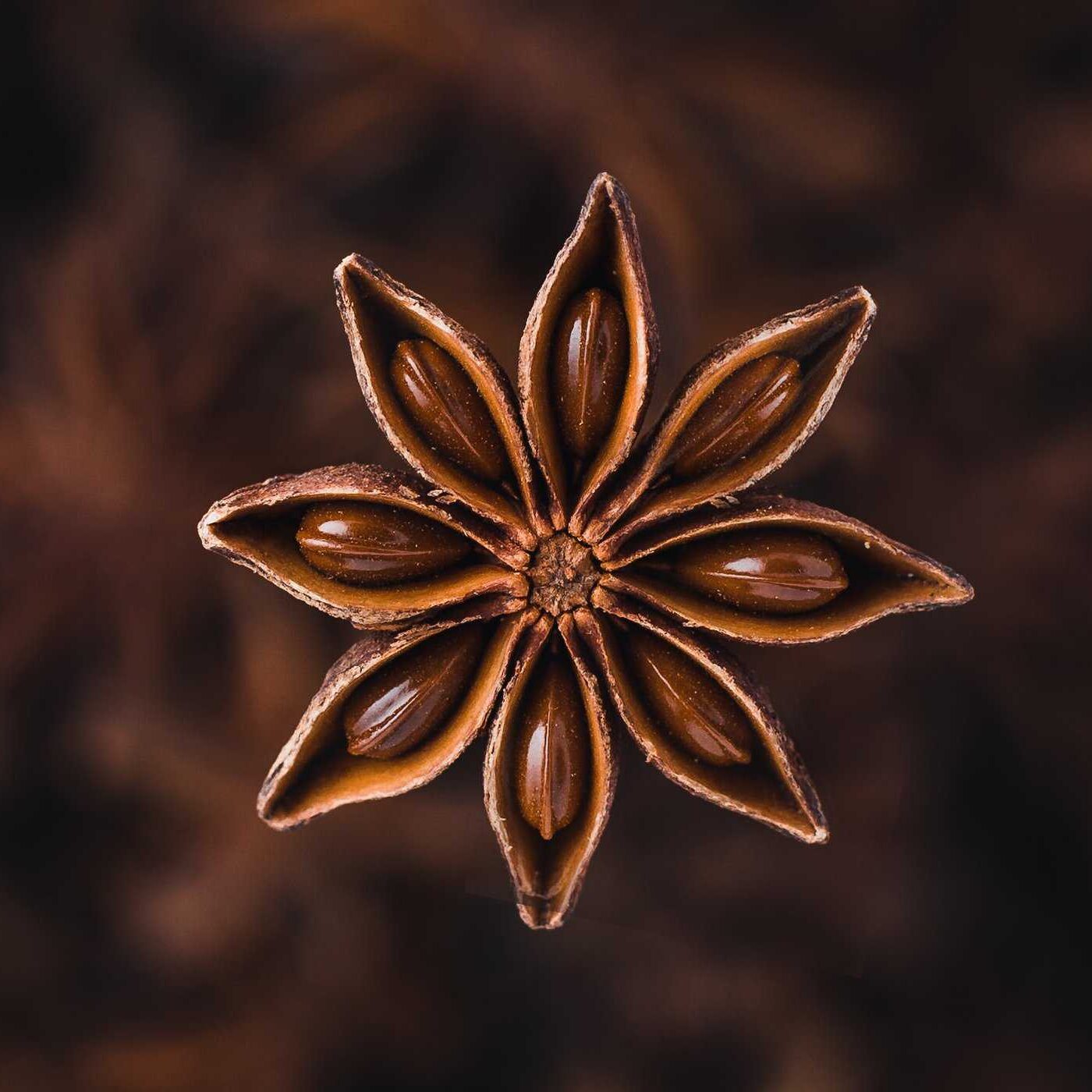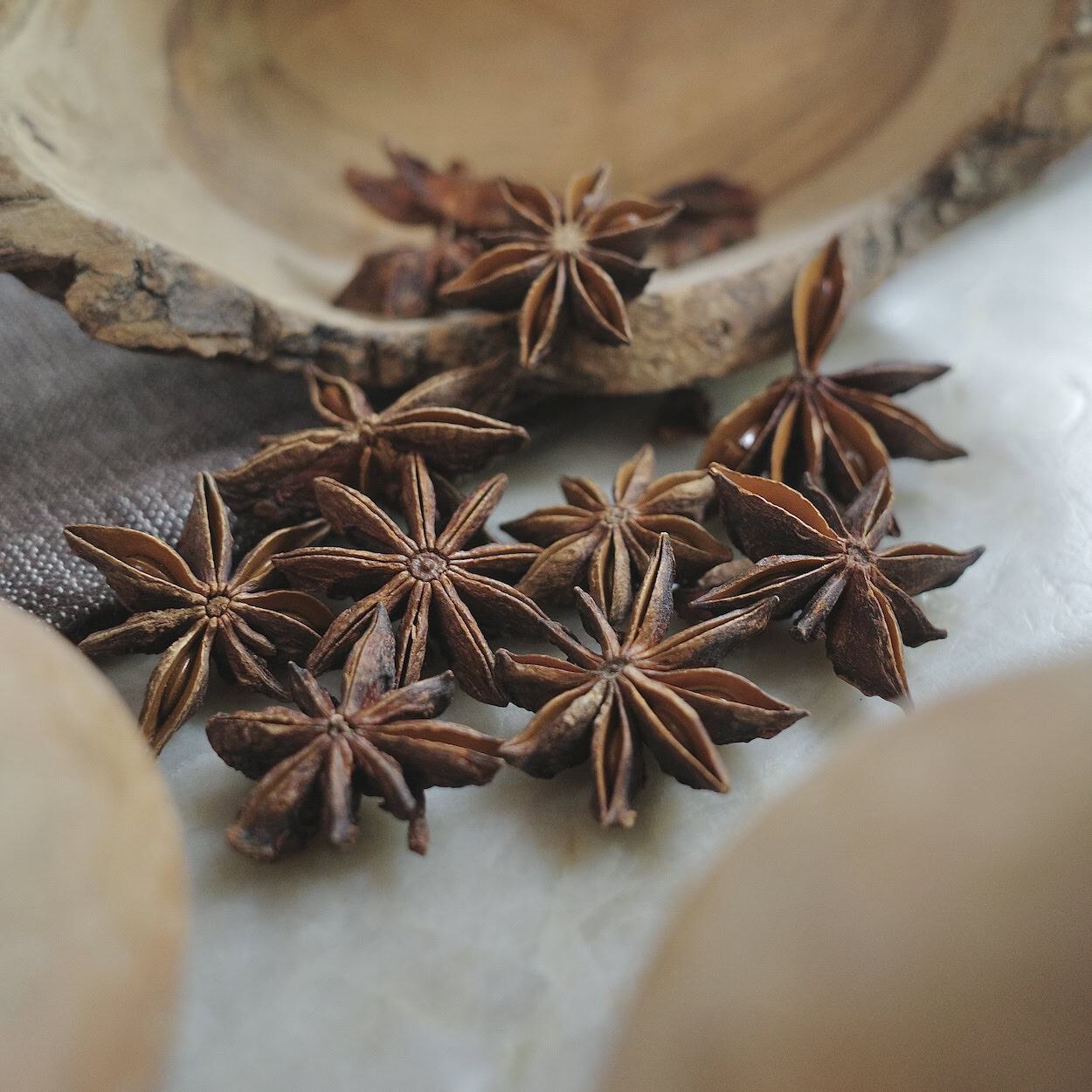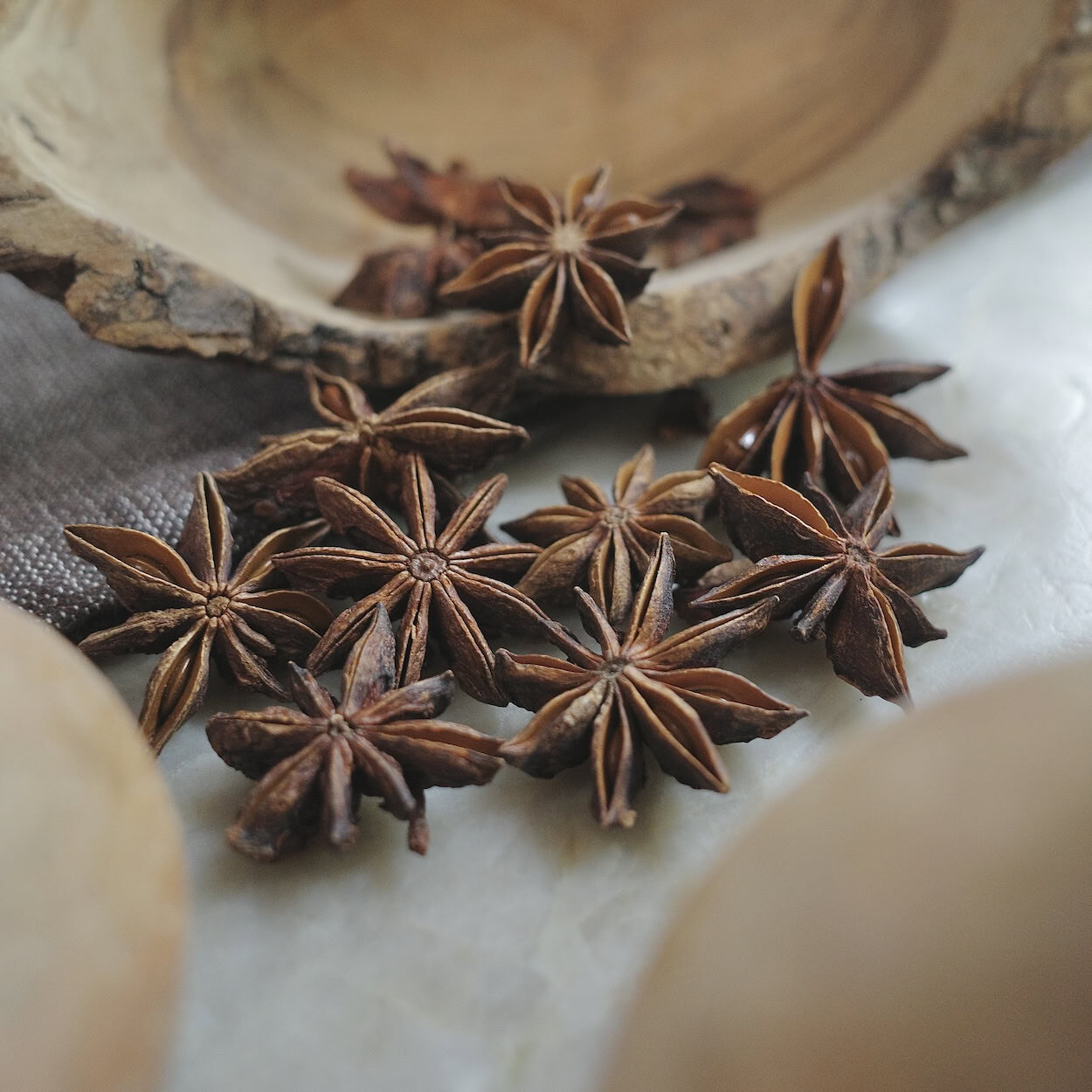Star Anise
Star anise is the spice produced from the pods and seeds of Illicium verum, a subtropical evergreen tree in the Schisandraceae family.

REGION OF ORIGIN
Northeast Vietnam is considered the center of star anise's origin, but the provinces of Yunnan and Guangxi in southern China also fall within its natural range. This region's sub-tropical, mountainous forests are ideal for the tree to thrive.
PART & COLOR
Star anise is the eight-pointed, star-shaped outer wall of the fruit pod (called a pericarp). Each section contains a small, glossy seed that is also edible and holds a similar flavor to the pericarp. When both are used in cooking, the entire fruit pod is considered the spice. Star anise is a warm brown or reddish to yellowish brown color with dark groves.
HARVEST
Illicium verum has male and female trees and only the females bear fruit. They start producing fruit around 6-7 years, and the fruits mature in a year. There are two harvests: the spring (primary) produces a higher quality than the autumn (secondary). In Vietnam, the primary is between March and April and the secondary is from July to September. In China, the primary is in March and the secondary is in October.

FLAVOR & AROMA PROFILE
Star anise’s most prominent aromatic note is a sweet one, reminiscent of anise and licorice, but warmer due to a subtle peppery spice that lies underneath. Hints of clove, fennel, and cinnamon can come through as well, making it even more intriguing. The flavor of star anise mirrors its aroma, delivering an unmistakable sweetness with a touch of spice. It is again similar to anise and licorice, but with a slightly more bitter undertone. Its spicy warmth lingers on the palate, leaving an enticing tingle that invites another bite.
Both comforting and exciting, star anise evokes a sense of nostalgia while pointing towards faraway lands. This quality of being familiar and exotic gives it a lot of opportunity. The spice can be used whole or ground depending on the desired intensity and effect. Whole star anise is often simmered in soups and stews to infuse a subtle, long-lasting flavor, while its freshly ground counterpart offers a more pronounced, immediate punch.
CULINARY USES
Star anise’s blend of sweetness with spice makes it highly versatile, effortlessly enhancing a wide array of dishes and beverages. It is essential to the fragrant broth of Vietnamese phở, lending a comforting warmth that perfectly complements the noodles and herbs. In Chinese cuisine, it is a key component of the iconic five-spice powder, used to season everything from braised meats and roasted duck to stir-fried vegetables and toasted nuts.
Star anise also shines in South Asian cuisine, where it adds richness to curries, rice dishes, and various spice blends. In Europe, star anise adds a festive flair to gingerbread, speculoos cookies, and mulled wine. Liqueurs like sambuca and absinthe are sometimes infused with star anise for a unique spin on the licorice flavor. A pinch of ground star anise can also add a hint of mystery to poached fruits like apples and pears. It is a flexible spice that commands respect in the kitchen and a place in your spice rack.


